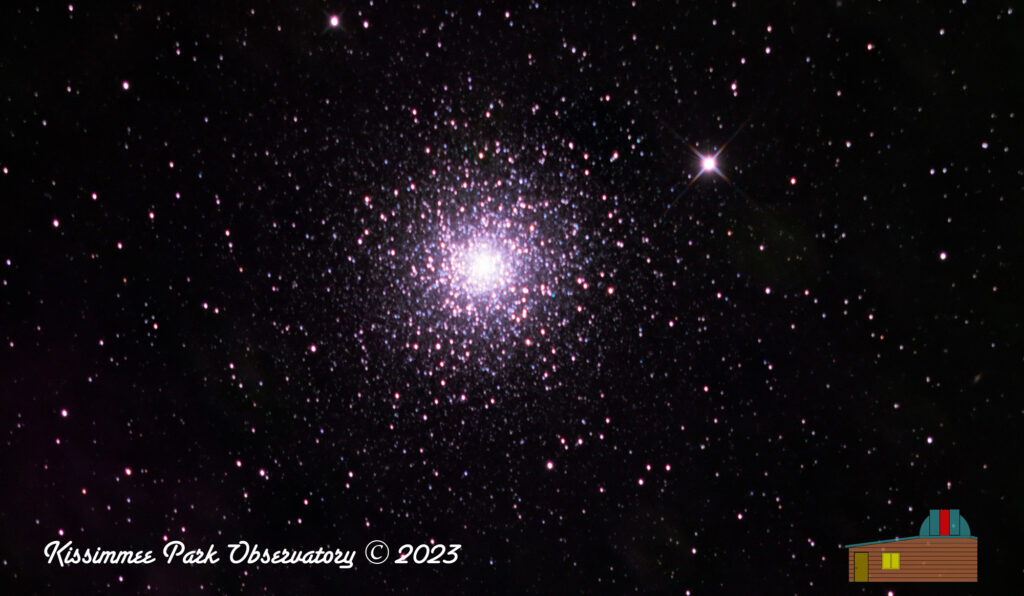Messier 15: A Stellar Marvel in the Night Sky
If you gaze up at the night sky with a sense of wonder and curiosity, you may have come across the term “globular cluster.” These celestial objects are captivating and mysterious, and one such cluster that has fascinated astronomers for centuries is Messier 15. Situated in the constellation Pegasus, Messier 15 is a stunning congregation of stars, offering a glimpse into the vastness and complexity of our universe.
A Stellar Gathering
Messier 15, often abbreviated as M15, is one of the oldest and most densely packed globular clusters known to astronomers. Located approximately 32,600 light-years away from Earth, it is a remarkable sight to behold. With a diameter of around 175 light-years, this spherical cluster contains hundreds of thousands of stars densely packed within its core.
Discovery and Classification
M15 was first discovered by the famous French astronomer Charles Messier in 1764. However, it wasn’t until 1928 that astronomer Harlow Shapley classified it as a globular cluster. Shapley’s classification was based on the cluster’s spherical shape, large number of stars, and its location outside the galactic plane.
Structure and Composition
Messier 15 is composed primarily of old stars, estimated to be around 12 billion years old, nearly as old as the universe itself. These stars are tightly packed together due to gravitational forces, forming a dense core within the cluster. The core contains a high concentration of blue stragglers, which are relatively young stars that appear bluer and hotter than their older counterparts.
Exploring the Stellar Graveyard
Globular clusters are often referred to as “stellar graveyards” because they contain stars that have exhausted their nuclear fuel and are no longer able to sustain fusion reactions. Yet, these clusters continue to fascinate astronomers due to their unique properties and the potential insights they offer about stellar evolution.
M15, in particular, has attracted attention for its dense core, which is one of the densest known in any globular cluster. The cluster’s core is so tightly packed that it has undergone a process known as core collapse, resulting in a high concentration of stars and a unique stellar environment.
Observing Messier 15
Messier 15 is relatively easy to observe, even with modest telescopes or binoculars. It can be found in the constellation Pegasus, not far from the star Enif. Look for a fuzzy, round patch of light, which will become more resolved and detailed with higher magnification.
Professional telescopes and observatories have provided stunning images of M15, revealing its intricate structure and the individual stars within it. These images allow astronomers to study the cluster’s dynamics, stellar populations, and interactions between stars.
A Beautiful Cluster
Messier 15 stands as a testament to the beauty and complexity of the universe. Its ancient stars, tightly packed core, and unique properties continue to captivate astronomers and stargazers alike. As we gaze upon this globular cluster, we are reminded of the vastness of space and the infinite wonders that lie beyond our world. Messier 15 serves as a celestial marvel that invites us to explore and understand the mysteries of our universe.
Image Info
- Imaged from the KPO field, in Saint Cloud, Florida
- Camera : ZWO ASI2600MM Pro
- Scope: Orion RC-12 Ritchey-Chretien Astrograph, 2450mm fl, F/8
- Mount: iOptron CEM-120
- Luminance: 88 subframes of 300s = 88 min integration
- Red: 21 subframes of 60s = 21 min integration
- Green: 30 subframes of 60s = 30 min integration
- Blue: 30 subframes of 60s = 30 min integration
- Total integration time: 169 min = 2.8 hours.
- Captured via ASIAir Pro automation
- Optical tracking via ASIAir automation via the ASI1600mm Pro guide camera
- Separate channels stacked and LRGB integrated in Astro Pixel Processor
- Image run through Super DeNoising
- Final processing in Aperture

